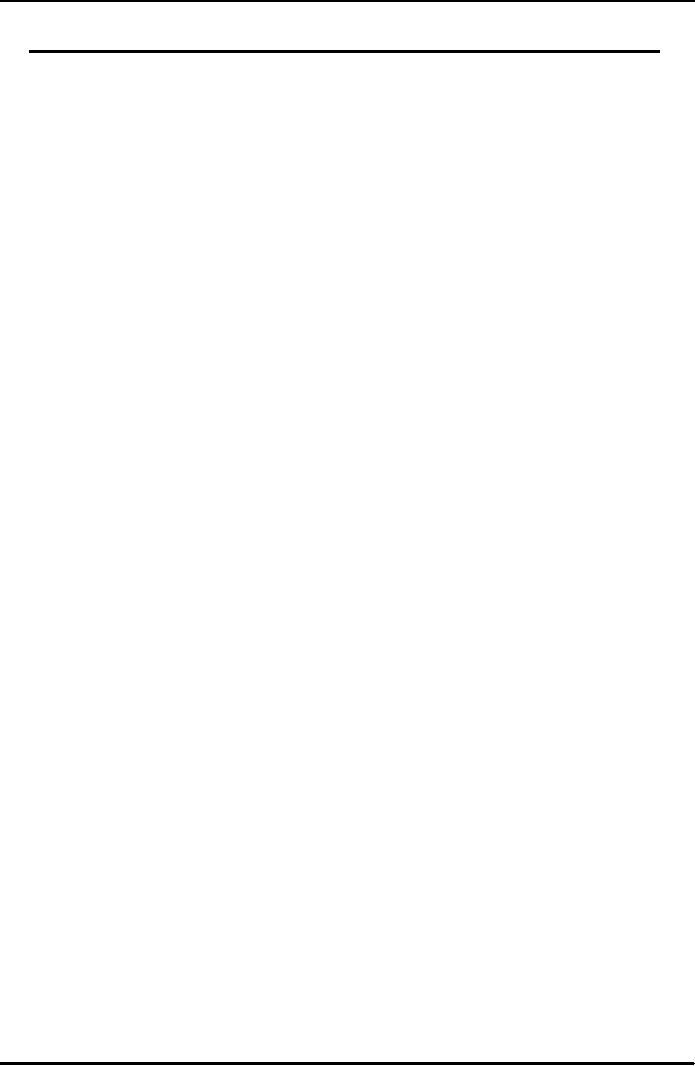 |

Change
Management MGMT625
VU
Lesson
# 33
Higgins
08 S Model An Adaptation from
Waterman's Seven S
model
The
purpose of this lesson is to
discuss one of the most
familiar models which is commonly
known as
McKinsey's
7-S model and was first
introduced to us in 1982 by Thomas J.
Peters and Robert H.
Waterman,
Jr. The most notable
thing about the 7-S model is
that it supports, and is similar
to, the
framework
of the managerial functions (planning,
organizing, staffing, leading, and
controlling).
In
the 8-S framework, the author emphasizes
on cross-functional way of thinking
about the execution of
a
revised version of strategy across an
organization. Successful organizations
spend a great deal of
their
time
on strategy execution and realize that
execution of a strategy is just as
important, if not more
important,
than formulating a strategy. So the
general tendency here is that how an
organization can
achieve
successful strategy execution that
revolves around aligning key
organizational factors with
strategy
1.
Strategy
We
are well familiar with the
hierarchy of strategic intent, which is
formulation of corporate,
business,
functional
operational level strategies
after evaluating scenarios
thru SWOT analyses. In
strategy, we
go
for an analysis about changes in
Strategic Intent which can be
quantitative or qualitative. And
there
are
three types of strategic levels at which a strategy
could be accomplice: corporate, business,
and
functional
levels.
The
corporate strategy defines what business
or businesses the firm is in or should be
in, and how the
firm
will conduct that business
(or those businesses) in a
fundamental way. For
instance, an
organization
has some number of businesses. In
some it estimates the opportunity of
growth potential
and
in some others it estimates
losses. The organization
goes for divestment in those
who are in loss
and
go for fresh investment where the growth
potential has been
estimated.
The
business strategy describes how a
firm will compete in a
particular business. A firm's
business
strategy
is its major plan of action
aimed at gaining a sustainable advantage over
competitors. Relative
differentiation
and relative low cost are
the two most frequently
suggested generic business
strategies.
Some
other business level
strategies are: development of new
product, innovation in research
and
development,
or capturing of some other
markets.
Functional
strategies support the business strategy.
Functional strategies in the areas of
marketing,
finance,
operations, human resources management, R & D,
information, and logistics should be
aligned
with
the business strategy.
Process
strategies normally cut across
functions and are aimed at
integrating organizational
processes
across
the organization in order to make them
more effective and more efficient.
Strategy formulation
involves
the consideration of strengths (for
example, core competencies
and capabilities),
weaknesses,
threats
and opportunities.
All
strategies must all be
aligned for strategic performance to be
optimal at both intra and
inter levels.
The
distinct aspect of this
model is that it talks about
the alignment of various strategies at
multiple
levels
and also with deal with
alignment issues with other
variables explained below.
Often such type of
alignment
is overlooked in the implementation
models.
2.
Structure
The
structure means job, grouping of
jobs, authority and its
delegation, field units &
Head office,
departmentation,
operating procedures, control
etc. The organization's structure,
according to Higgins
consists
of five parts:
86

Change
Management MGMT625
VU
1.
jobs;
2.
the
authority to do those
jobs;
3.
the
grouping of jobs in a logical
fashion, for example, into
departments or divisions;
4.
the
manager's span of control;
5.
and
the mechanisms of coordination.
The
first four of these parts
are normally shown in an organization
chart. The last is usually described
in
the
firm's operating policies and
procedures.
Major
issues include the choice of the
organizing principle for
primary organizational units,
for
example,
product versus function, or
product versus geography;
and how such authority to
delegate to
organizational
units and managers,
traditionally thought of in terms of
centralization versus
decentralization,
or mechanistic versus organic.
For
instance, rivalry between marketing and
production departments or between
marketing and finance
departments
creates ethnocentricity or conflict in
working environment. Nonetheless,
structural
harmony
can be created through
promoting policies of internal
customer and cross-functionalism
3.
Systems and Processes
Organizational
systems are designed to get things done
from day to day. For
example with in
organizational
system we have sub systems
like strategic planning systems,
information systems,
capital
budgeting systems, manufacturing
processes, reward systems
and processes,
quality-control
systems
and processes, and performance
measurement systems. This is the
third factor in
Higgins
model
is which we have discussed earlier in
Management Orientation. The
systems and processes
enable
an organization to get things done on day
to day basis. The point
here is that the change
in
strategy
envisage by organizational planners should be
compatible to the day-to-day practices as
well.
For
dealing with such actions we have
two practices:
i)
Internal
Customer Philosophy
ii)
Cross-Functionalism
At
systemic level, we have an
internationally practices which is
given by ISO-9000. This
suggests that
the
systemic structure should be able to
deal with the philosophy of
Internal Customer. It means that,
in
order
to promote inter-departmental harmonious
relationship one department should treat
other as an
internal
customer.
The
other managerial philosophy is of
cross-functionalism which places greater
emphasis on amongst
the
interaction and cooperation of specialized
functional units, such as
departments, according to
their
role
in the organization for organizational
stability and cohesion. One
such technique to promote
cross-
functionalism
is of job rotation.
4.
Style (leadership/management
style)
The
consistent pattern of behavior
exhibited by leaders/managers when
relating to subordinates and
other
employees. Major issues include the
way leader's or manager's presents,
communicate, and
control
the people or situation. How
effective the decision making
process is? In literature,
particularly
in
management context, we have four
leadership styles available:
1.
Authoritarian
Style
2.
Consultative
Style
3.
Consensus
oriented Style
4.
Democratic
Style
87

Change
Management MGMT625
VU
The
other thing which important
that how a leader relate
itself to its subordinate,
either he
believe
on transaction oriented relationships
which is short term or
professional phenomena or
transformational
oriented which is long term
and a progressive phenomena.
5.
Staff
The
number and types of employees with what
types of individual and group
competencies the firm
needs
to meet its strategic purposes.
The staffing means filling
positions in the organization
structure.
The
main issue is that how to
create an appropriate Management
Inventory or Human Asset in an
organization
and it can be synergized with strategic
change or strategic intent.
6.
Resources
The
extent to which the organization
has adequate resources to achieve
its strategy--people
(staff),
technology
and money are the three most
critical. Resources may
include funding for
divisions such
as
R & D, or technology such as
software, or systems such as
those for knowledge
management and
organizational
learning. The other major
concern is the extent to which the
organization leverages
its
resources. However it is important
that resource-strategy compatibility is
highly desirable.
7.
Shared Values (organizational
culture)
The
values shared by members of the
organization that make it
different from other
organizations.
Managing
values and cultural artifacts are
critical to successfully leading
organizational change.
This
operates
at intangible level and has
significant impact on the working
environment of an organization.
8.
Strategic Performance
Strategic
performance is a derivative of the other
seven `S's. Strategic performance is
possessed by an
organization
as a whole, or for profit-based
parts of the whole. Performance can be
measured at any
level.
Financial performance measurements are
critical barometers of strategic performance,
but its
expanded
version of balanced scorecard approach,
now a days is considered best.
Because most
organizations
and business units are structured
along functional lines--marketing,
operations, finance,
human
resources, R&D, information,
logistics--cross functional execution
issues are sometimes
overlooked
when strategy is changed. Important
thing to note is that strategic
change operates at
holistic
level integrative of different
functional areas. The same
is also known as strategic
performance.
88
Table of Contents:
- COURSE ORIENTATION:Course objectives, Reading material, Scope of the subject
- BENEFITS AND SIGNIFICANCE OF CHANGE MANAGEMENT:Traditional management domain
- KURT LEWIN MODEL: ASSUMPTIONS AND IMPLICATIONS:Change Movement, Refreeze
- IMPLICATIONS OF KURT LEWIN MODEL:Sequence of event also matters, A Critical Look
- SOME BASIC CONCEPTS AND DEFINITIONS:Strategic change, Logical incrementalism
- TRANSACTIONAL VS. TRANSFORMATIONAL LEADERSHIP:Micro-changes, Organisation Development
- THEORIES OF CHANGE IN ORGANISATIONS
- LIFE CYCLE THEORY:Unit of Change, Mode of change, Organisation death
- TELEOLOGICAL THEORIES OF CHANGE:Unit of change, Mode of Change, Limitations
- DIALECTICAL THEORIES OF CHANGE:Unit of Change, Strategic planning
- A DIALECTICAL APPROACH TO ORGANISATIONAL STRATEGY AND PLANNING:
- LIMITATION OF DIALECTICS; DA AND DI:Overview of application of dialectics
- THEORIES OF CHANGE IN ORGANISATIONS
- APPLICATION OF EVOLUTIONARY THEORY:Managerial focus
- FURTHER APPLICATION OF EVOLUTIONARY THEORIES:Criticism
- GREINER’S MODEL OF ORGANISATIONAL– EVOLUTION AND REVOLUTION
- GROWTH RATE OF THE INDUSTRY:CREATIVITY, DIRECTION, DELEGATION
- COORDINATION:COLLABORATION, The Crisis
- ORGANISATION ECOLOGY:Structural Inertia, Internal Structural Arrangements, External Factors
- CLASSIFICATION OF ORGANIZATIONAL SPECIES:Extent of Environmental Selection, Determinants of Vital Rates,
- FOOTNOTES TO ORGANISATIONAL CHANGE:Stable Processes of Change, Rule Following, Conflict
- SOME COMPLEXITIES OF CHANGE:Superstitious Learning, Solution Driven Problems
- ORGANIZATIONAL ADAPTATION:The Entrepreneurial problem, The Administrative Problem
- PROSPECTORS:Analyzer, Reactors, Adaptation and Strategic Management
- SKELETAL MODEL OF ADAPTATION:Determinants of Adaptive ability, The Process of Adaptation
- STRATEGIC CHANGE:Nature of Change, The Importance of Context, Force field Analysis
- Management Styles and Roles:Change Agent Roles, Levers for managing strategic Change
- SYMBOLIC PROCESSES:Political Processes, COMMUNICATING CHANGE, Change Tactics
- STRATEGIC CHANGE:Pettigrew & Whipp’s Typology, Context on X-axis (Why of change)
- STRATEGIC CHANGE:Attributes of SOC Model, Implications for Management
- STRATEGIC CHANGE:Flow of Information, Recruitment, SOC Process
- Determinants of a Successful Change Management:Environmental, Management Orientation, Management Orientation
- Higgins 08 S Model – An Adaptation from Waterman’s Seven S model:Strategy, Systems and Processes, Resources
- IMPLEMENTATION AND STRATEGIC CHANGE: CONSTRAINING FORCES IN THE IMPLEMENTATION OF STRATEGIC CHANGE (CASE STUDY OF XYZ COMPANY)
- IMPLEMENTATION AND STRATEGIC CHANGE: CONSTRAINING FORCES IN THE IMPLEMENTATION OF STRATEGIC CHANGE (CASE STUDY OF XYZ COMPANY)
- WHY IMPLEMENTING STRATEGIC CHANGE IS SO DIFFICULT?:Change Typology, Technical Change
- IMPLEMENTATION APPROACHES:Attributes of incremental change,
- IMPLEMENTATION: RADICAL OR TRANSFORMATIVE CHANGE
- IMPLEMENTATION: RADICAL OR TRANSFORMATIVE CHANGE:Definition of Leadership, Follower Work Facilitation
- IMPLEMENTATION: RADICAL OR TRANSFORMATIVE CHANGE:Recognize the challenge
- IMPLEMENTATION: RADICAL OR TRANSFORMATIVE CHANGE
- IMPLEMENTATION: PUNCTUATED EQUILIBRIUM MODEL:Features of Radical Change, Theory of P-E model
- CHANGE IMPLEMENTATION: OD MODELS:The Transactional Factors
- CULTURE, VALUES AND ORGANIZATIONAL CHANGE:Significance and Role of Values, Values Compete
- ORGANIZATIONAL VALUES, CULTURE AND ORGANIZATIONAL CHANGE:Issues in Change Management